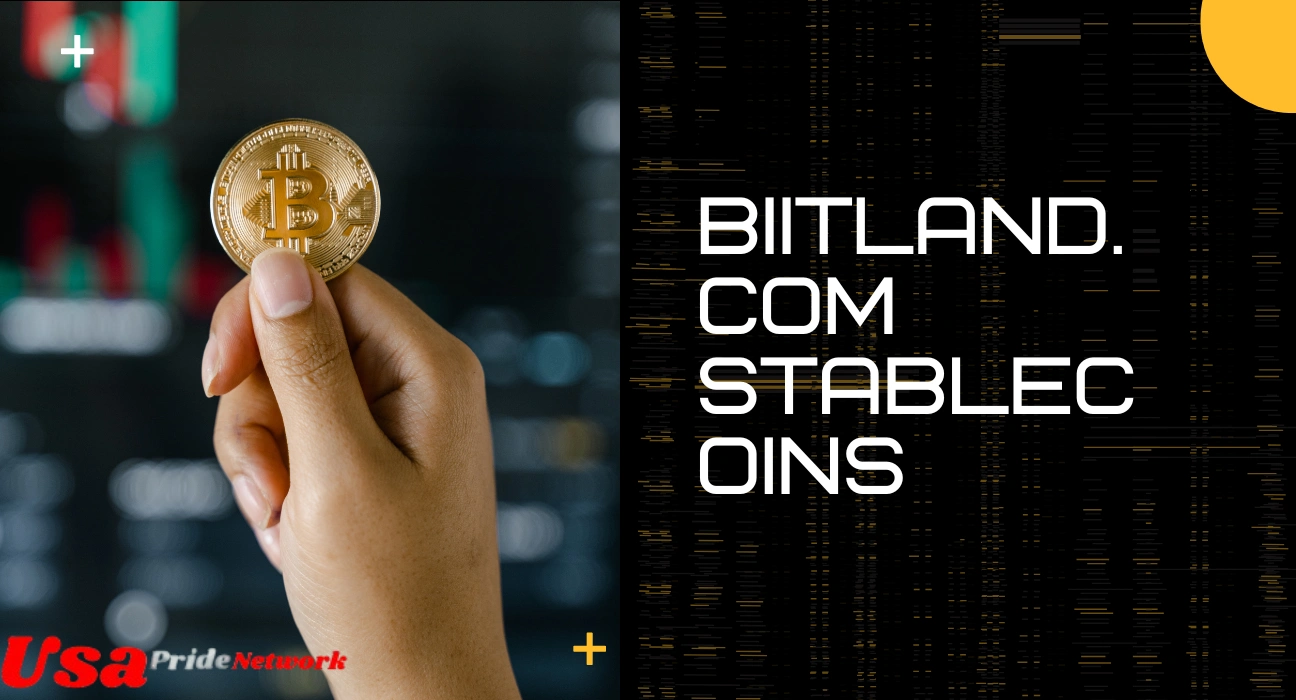Cryptocurrencies have transformed the financial landscape, offering decentralized transactions and digital ownership. However, price volatility remains a major challenge for widespread adoption. This is where Biitland.com stablecoins play a vital role, offering a bridge between traditional finance and the crypto world. These digital assets maintain a stable value, making them reliable for payments, savings, and financial applications.
In this article, we will explore Biitland.com stablecoins, their types, mechanisms, and their role in decentralized finance (DeFi). We will also discuss their benefits, risks, and future potential.
What Are Stablecoins?
Stablecoins are cryptocurrencies designed to maintain a stable value by pegging to a reserve asset like fiat currency (USD, EUR), commodities (gold, silver), or using algorithmic mechanisms. Unlike Bitcoin and Ethereum, whose prices fluctuate, stablecoins provide consistency, making them ideal for trading, remittances, and financial services.
Also Read: V4Holt
How Do Biitland.com Stablecoins Work?
Biitland.com stablecoins use a mechanism that ensures their price stability. They achieve this through:
- Collateralization: Backed by assets like fiat money, cryptocurrencies, or commodities.
- Algorithmic Adjustments: Automated supply control via smart contracts to maintain value.
- Redemption Mechanism: Users can convert stablecoins back to their pegged asset.
Types of Biitland.com Stablecoins
Stablecoins are categorized based on how they maintain their price stability. Biitland.com stablecoins follow the general classifications:
Fiat-Collateralized Stablecoins
These are backed by traditional currencies like the U.S. Dollar, Euro, or Yen. For every stablecoin issued, an equivalent amount of fiat is held in reserves. These reserves are audited regularly to ensure transparency.
Example: Tether (USDT), USD Coin (USDC)
| Feature | Description |
| Pegged Asset | Fiat Currencies (USD, EUR) |
| Stability Mechanism | 1:1 Backing with Reserves |
| Usage | Payments, Trading, DeFi |
Fiat-collateralized stablecoins are widely used because of their direct linkage to a stable fiat currency. Their stability is crucial for investors and traders who want to avoid the high volatility of other cryptocurrencies.
Crypto-Collateralized Stablecoins
These are backed by cryptocurrencies rather than fiat money. Since crypto is volatile, these stablecoins are over-collateralized, meaning the reserve contains more assets than the issued stablecoins.
Example: MakerDAO’s DAI
| Feature | Description |
| Pegged Asset | Cryptocurrencies (ETH, BTC) |
| Stability Mechanism | Over-Collateralization |
| Usage | DeFi, Smart Contracts |
Unlike fiat-backed stablecoins, crypto-backed ones operate in a decentralized manner, eliminating the need for trust in a central entity. However, the volatility of crypto assets can sometimes lead to liquidation events.
Commodity-Collateralized Stablecoins
These stablecoins are backed by physical assets like gold, silver, or real estate. They provide a digital way to invest in commodities.
Example: PAX Gold (PAXG)
| Feature | Description |
| Pegged Asset | Commodities (Gold, Silver) |
| Stability Mechanism | 1:1 Backing with Real Assets |
| Usage | Asset-backed Investment |
Commodity-backed stablecoins allow investors to gain exposure to tangible assets without the challenges of physical ownership.
Algorithmic Stablecoins
Instead of relying on collateral, these stablecoins use smart contracts and algorithms to balance supply and demand. When demand rises, more tokens are issued; when demand drops, supply is reduced.
Example: TerraUSD (UST), Frax (FRAX)
| Feature | Description |
| Pegged Asset | No Physical Backing |
| Stability Mechanism | Supply Adjustment Algorithms |
| Usage | DeFi, Liquidity Provision |
Algorithmic stablecoins are innovative but have faced challenges, particularly in maintaining their pegs during extreme market conditions.
Use Cases of Biitland.com Stablecoins

Safe Crypto Trading
Traders use stablecoins to hedge against volatility, avoiding drastic price drops in cryptocurrencies like Bitcoin and Ethereum.
Global Remittances
Stablecoins provide faster and cheaper cross-border transactions compared to traditional banking methods. Sending money internationally becomes seamless and cost-effective.
Decentralized Finance (DeFi)
Stablecoins are the backbone of lending, borrowing, and yield farming in DeFi platforms. Users can earn interest without relying on banks.
Payments and E-Commerce
Merchants can accept stablecoins as payment, reducing transaction costs and eliminating bank intermediaries.
Wealth Preservation
During market crashes, investors shift to stablecoins to protect their capital, maintaining value until conditions improve.
Risks and Challenges of Biitland.com Stablecoins
While Biitland.com stablecoins offer stability, they are not without risks. Some challenges include:
Regulatory Scrutiny
Governments are tightening regulations on stablecoins due to concerns over financial stability, money laundering, and investor protection.
Also Read: Evecancel.site
Centralization Risks
Many stablecoins, especially fiat-backed ones, rely on centralized entities that hold reserves, leading to potential trust issues.
Collateral Volatility
Crypto-backed stablecoins face risks if their collateralized assets drop in value, leading to potential liquidation.
Algorithmic Stability Failures
Algorithmic stablecoins depend on smart contracts to adjust supply, but extreme market conditions can break these mechanisms.
Future of Biitland.com Stablecoins
Stablecoins are gaining mainstream adoption, with central banks considering digital currencies (CBDCs) based on the same principles. The future looks promising, with possible developments including:
- Regulated Stablecoins: Increased oversight will make stablecoins more trustworthy.
- Integration with Payment Systems: More merchants will accept stablecoins for goods and services.
- Expansion into Traditional Finance: Stablecoins will be used for loans, investments, and savings accounts.
- Cross-Border Banking Solutions: Stablecoins will simplify global banking, allowing instant international transactions.
Frequently Asked Questions
What are Biitland.com stablecoins?
Biitland.com stablecoins are digital assets designed to maintain a stable value by pegging to fiat currencies, cryptocurrencies, or commodities. They offer secure, low-volatility transactions in the crypto ecosystem.
How do Biitland.com stablecoins maintain stability?
They use collateralization (fiat, crypto, or commodities) or algorithmic mechanisms to control supply and demand, ensuring a stable price and reducing volatility.
Why are Biitland.com stablecoins important in DeFi?
They provide liquidity, enable lending/borrowing, and facilitate seamless transactions in decentralized finance (DeFi), making them essential for financial applications.
Are Biitland.com stablecoins safe to use?
They are generally secure if backed by transparent reserves and audits, but users should be aware of regulatory risks, centralization concerns, and collateral volatility.
Conclusion
Biitland.com stablecoins represent a major advancement in financial technology, offering a secure, efficient, and low-cost alternative to traditional currencies. Whether for trading, remittances, or decentralized finance, they provide numerous advantages over traditional banking systems.
Despite regulatory and stability concerns, their future remains bright and full of potential. As the financial world embraces digital transformation, stablecoins will continue to play a critical role in shaping the future of money.
For investors, businesses, and everyday users, understanding Biitland.com stablecoins is essential to leveraging the full power of digital assets in the modern economy.




